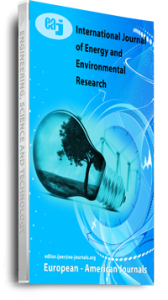System and environmental parameters affecting the output of the wind farm system at different stations in Jordan have been computationally investigated, using artificial neural network (ANN). For the several variables identified, statistical analysis was employed to indicate their relative significance to the targeted output, with the aid of the Pearson’s correlation coefficients. ANN shows proficiency in the prediction of the original experimental data for all the stations and turbines. In the simulation, the energy gain increases with the increase in the system and environmental parameters. However, there appears to be a phenomenon of threshold value in the output parameter, which limits the impacts of change in the input parameters on the eventual response of the output. It can be deduced that there is a minimum energy gain value below which increase in any of the system/environmental parameters will not have positive impact on the energy output. Findings show that the turbine characteristics, like rotor diameter and hub height, have more significant impact on the energy gain than the environmental factor like wind speed. The uniqueness of this work is that it predicts the important output of the wind farm system based on the logical arrangement of detailed parameters that are found in all operational units of the system in order to elicit desired effects.
Keywords: Artificial Neural Network, Energy Gains, Rotor Diameter., Wind Farm, Wind Turbine

